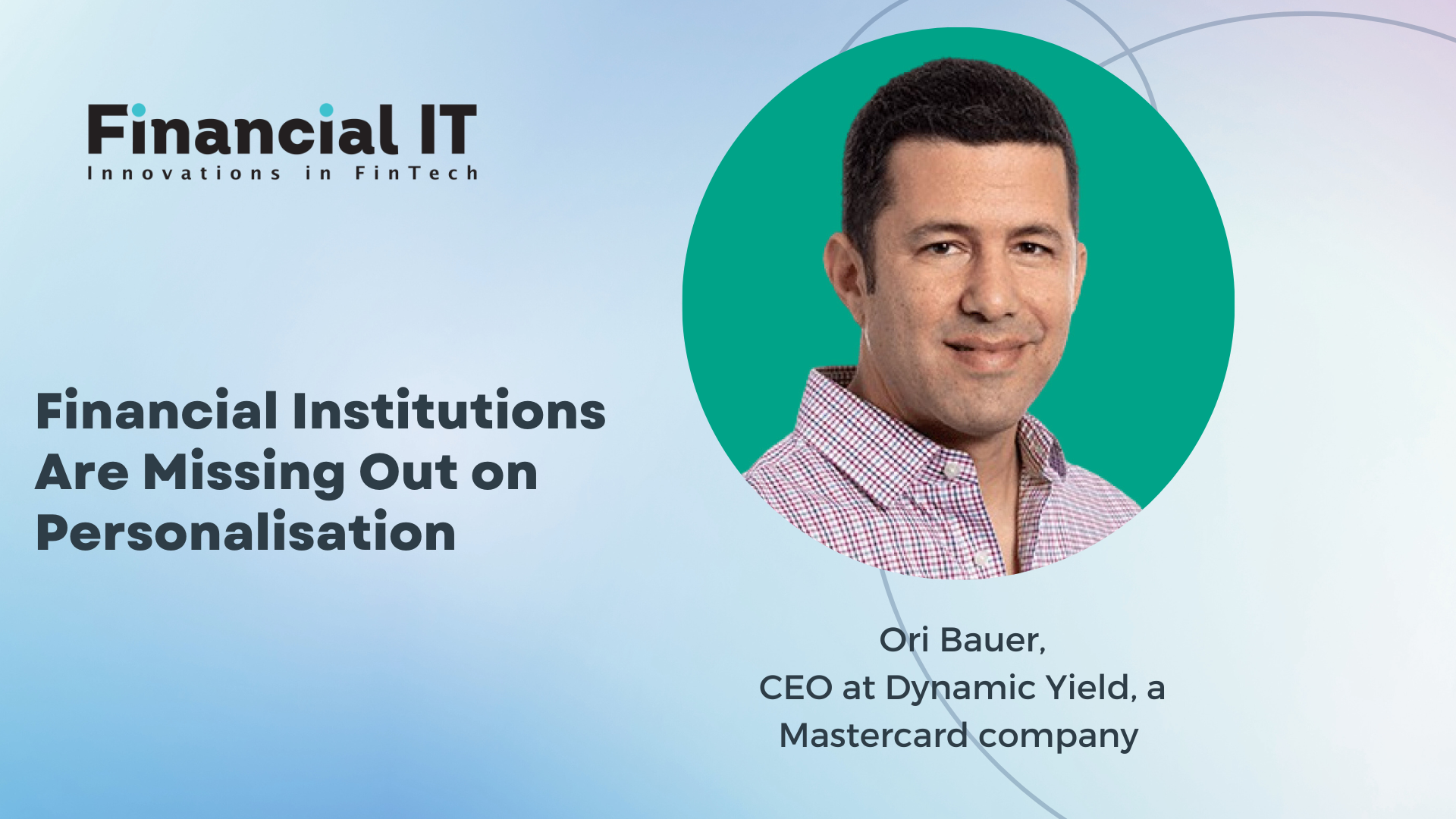Financial Institutions Are Missing Out on Personalisation

- Ori Bauer, CEO at Dynamic Yield, a Mastercard company
- 29.02.2024 10:45 am #banks #data #ai #personalisation
As brands rushed to build seamless and effective omnichannel presences at the start of the pandemic, consumers benefitted from more choice and a renewed focus on better experiences. In the wake of that rush, we now get relevant and personalized experiences when we engage with streaming services, retailers, online grocery platforms and beyond, and have come to expect the same level of tailored service across the board. But one industry remains stuck behind the curve: financial institutions (FIs) have yet to adequately meet the new consumer demand.
That said, there is huge opportunity for banks and FIs to do so over the next few years – just 21% of bank customers say they receive personalized advice or guidance when it comes to financial decisions. And there’s an appetite for better experiences, with 47% of consumers who received effective advice going on to open a new account. Given the competitive landscape, it’s only a matter of time before a consumer turns their eye toward a bank that adds value through such personalisation.
While effective rules of engagement haven’t always been clear, FIs are often plagued by the same challenges.
Inconsistent data
Though FIs have a wealth of consumer data available, research suggests that 72% struggle to integrate it rapidly into engagement systems, forcing teams to manually manage their personalisation campaigns using whatever data is available. This approach is both inefficient and difficult to scale, especially as the number of audiences and experiences increase. Machine learning can neutralize this challenge, but not without consistent and meaningful data inputs from across the business.
Poor organisational design
FIs are experienced in consumer acquisition, adoption, and lifecycle management, but embedding thoughtful personalisation requires a new way of thinking and a different set of resources. Companies that excel at personalisation generate 40% more revenue – but the learning curve can cause many to bail before the rubber hits the road. A strong operational framework includes at least one key stakeholder who drives personalization efforts across the business, commits to prioritizing and learning from quick wins, and uses that data to scale over time.
Narrow scope of AI
Traditional algorithms can manage simple experience optimization but are limited in scope. While they’re programmed to drive traffic to the best-performing variation, they cannot effectively predict the products, offers, or services a customer is most likely to interact with next. To unlock the full potential of AI, FIs must adopt advanced deep learning and affinity models that activate personalisation with a much higher degree of accuracy. The upside: though the technology is sophisticated, the setup is minimal.
Solving the Personalisation Puzzle
Personalisation can be the differentiator between one bank and another when solutions to these common problems are informed by specific, unique, and actionable insights. But bringing those efforts to life requires banks to rethink how they operate – from industrial organization to technological framework – to better show up for their consumers and see real value. With the right operational investments to unify data and deepen AI capabilities, and a key stakeholder in place to drive your efforts, true hyper-personalization at scale is achievable.
And while getting from point A to point B requires you to rethink your holistic approach, the first step is relatively simple: start testing with the data you have (interactions captured from the site or app can provide a treasure trove of valuable information from known and unknown users), learn from your results, and repeat, keeping data at the center of every decision.
When personalisation is truly integrated, an FI can tailor the website accordingly to a student shopping for a credit card vs a small business owner looking for a loan. FIs can also drive spend to specific categories, reward existing behavior with cash back or other offers, and so much more. Ultimately, understanding your consumers and delivering better experiences is the most sustainable business model for productive relationships.



















